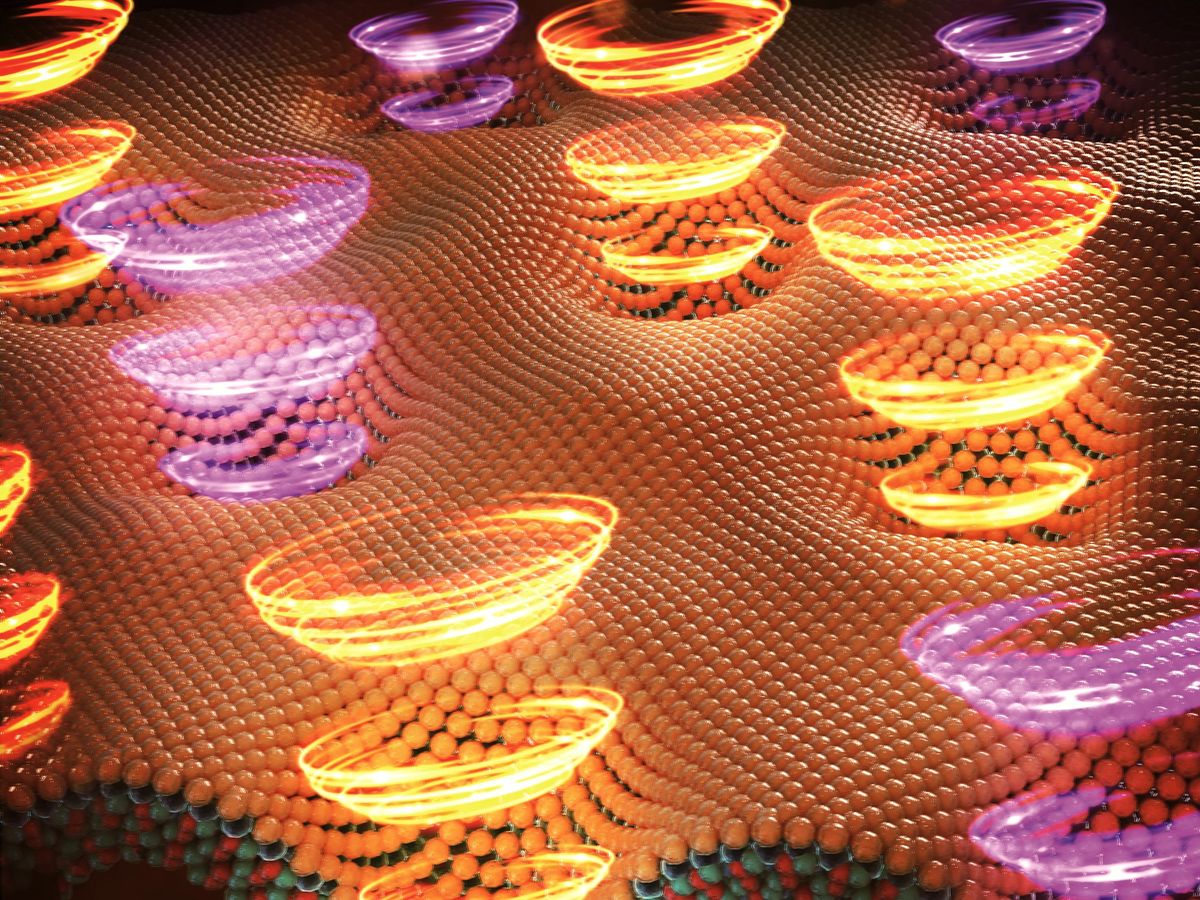Researchers at Los Alamos National Laboratory have developed a technique that can produce polarized photons more easily and cheaply than existing methods. The technique uses an atomic force microscope to form indentations in a two-layer stack of atomically thin materials. The indentations produce small magnetic fields that polarize photons emitted by the system. If scaled up, the method could accelerate progress in making quantum communication a reality.
Quantum communication uses photons to carry information, much as classical communication uses electrons. But while classical computers encode information by turning current on or off, quantum computers do so by changing the orientation of each photon’s electromagnetic wave, known as the photon’s polarization. Encoding information in this way can take advantage of quantum phenomena like superposition and entanglement to gain new communication features, like security that is inherently built into quantum networks.
Developing an effective method of changing photon polarization is one of the fundamental steps toward achieving quantum communication. Current methods are complex and expensive. Some require a great deal of precision, such as hooking up quantum emitters—devices that emit single photons—with nanoscale structures capable of affecting their polarization. Others require enormous amounts of energy, such as giant magnets cooled down to the temperature of liquid helium that can induce photon polarization by changing photons’ energy states. One such magnet located at Los Alamos National Laboratory consumes so much energy it needs a generator the size of a house, said Han Htoon, scientist at the Center for Integrated Nanotechnologies at Los Alamos and coauthor of the study.
“What we think is happening is the indentations not only created quantum emitters in the tungsten diselenide—it also disrupted the magnetic aura in nickel phosphorus trisulfide, such that it creates tiny little magnets.”—Han Htoon, Center for Integrated Nanotechnologies, Los Alamos
The study’s researchers significantly reduced the complexity and energy usage of photon polarization by streamlining the process into a single device that both emits photons and also affects their polarization. The device is a stack of two ultrathin materials: The top layer consists of tungsten diselenide, a material commonly used for its quantum light emission properties; the bottom layer consists of nickel phosphorus trisulfide, which is extremely stable and also provides a crucial source of magnetism for the device. Because the photons are emitted so close to the ferromagnetic material, that magnetism is enough to induce photon polarization.
Oddly, said Htoon, nickel phosphorus trisulfide normally lacks any ferromagnetic properties. But researchers discovered that when the two-layer device was peppered with nanoscale indentations using an atomic force microscope, it created tiny magnets across the surface.
The researchers believe this ferromagnetic property occurs because the indentations cause a strain on the layered material and modifies its energy landscape. The electron spins in the nickel phosphorus trisulfide material, which originally were random and canceled each other out, became aligned through the indentations and created the ferromagnetic property.
“So, in principle, if you put tungsten diselenide on top of nickel phosphorus trisulfide, we should not see any effect—and actually in our first experiment indeed we see nothing,” Htoon said. “What we think is happening is the indentations not only created quantum emitters in the tungsten diselenide—it also disrupted the magnetic aura in nickel phosphorus trisulfide, such that it creates tiny little magnets.”
As Htoon said, the indentations were originally made so the top layer material would emit photons through the process of quantum confinement, which results in the emission of photons when electrons are contained in a small space and energized by a laser. But luckily, the indentation process also gave the device a ferromagnetic property. As a result, the researchers were able to create a single device that could both emit photons and also induce polarization in the photons.
Currently, the induced photon polarizations are random, with no control over which photons will exhibit right or left circular polarization. But Htoon predicts that photon polarizations may eventually be modulated, by using microwaves or electricity to manipulate them, for example. That raises the possibility of creating an efficient, cost-effective device that not only can create polarized photons but also specify exactly what the polarizations should be.
“In that case we will get a fully ‘2-in-1’ device—a device that can generate photons and at the same time encode them,” Htoon says. “That would be the future direction.”
- Quantum Communication at Room Temperature - IEEE Spectrum ›
- Expanding Horizons of Long-Haul Quantum Communications - IEEE ... ›
- New Protocol Kills Dead Air For Quantum Communication - IEEE Spectrum ›


